Galaxy A10 vs. Galaxy A30 vs. Galaxy A50: What Are Their Differences?
Karamchand Rameshwar - Mar 20, 2019

Galaxy A10, Galaxy A30, and Galaxy A50 are three latest additions in the Galaxy A series in India. Check our out comparison to see how they differ.
- Best Gaming Phones 2025: Top Devices for Mobile Gaming
- Samsung Odyssey 2025 Gaming Monitors Launch in India with Revolutionary Features
- Samsung Galaxy Z Fold 7 Ultra: The Next Chapter of Premium Foldables
Samsung has been quite active in the last couple of weeks. The South Korean phone maker has been launching quite a few handsets in the budget and mid-range segment along with the launch of the Galaxy S10 lineup. In the early of February, the company launched the Galaxy M10 and Galaxy M20 in the new Galaxy M series in India. About a month later, Samsung announced another Galaxy M phone dubbed Galaxy M30 which was followed by Samsung announcing three new handsets in the Galaxy A series. They are Galaxy A10, Galaxy A30, and Galaxy A50. We have already talked about the Galaxy M trio, so now, we will briefly go through the three Galaxy A phones that have just launched in India. Check out our comparison to see how these three phones differ from each other and which one will be the right choice for you.

Galaxy A10 vs. Galaxy A30 vs Galaxy A50: Price

Let’s begin with the most affordable device in the lineup. The Galaxy A10 only comes in a single variant with 2GB of RAM/32GB of storage, and it is priced at Rs. 8,490.
Next in line is the Galaxy A30 which is also offered at a single option with 4GB of RAM/64GB of storage for Rs. 16,990.
The most expensive one of the three, the Galaxy A50, costs Rs. 19,990 for the option with 4GB of RAM and Rs. 22,990 for the model with 6GB RAM.
The Galaxy A30 and A50 were up for sale from 2 March while Galaxy A10 will be available from 20 March via Samsung’s online store, and some e-commerce sites.
Galaxy A10 vs. Galaxy A30 vs. Galaxy A50: Specifications & Features
From the prices of these three phones, you might have already guessed that they are launched in different segments.
The entry-level Galaxy A10 sports a 6.2-inch HD+ TFT LCD display with a water-drop notch on top housing a selfie camera. Under the hood, it runs on a Samsung’s Exynos 7884 SoC coupled with Mali-G71 MP2 GPU, 2GB of RAM/32GB of storage which is expandable via a microSD slot up to 512GB. Powering the phone is a 3,400mAh cell via a micro-USB port. As for software, it runs the One UI which is based on the latest Android 9.0 Pie.
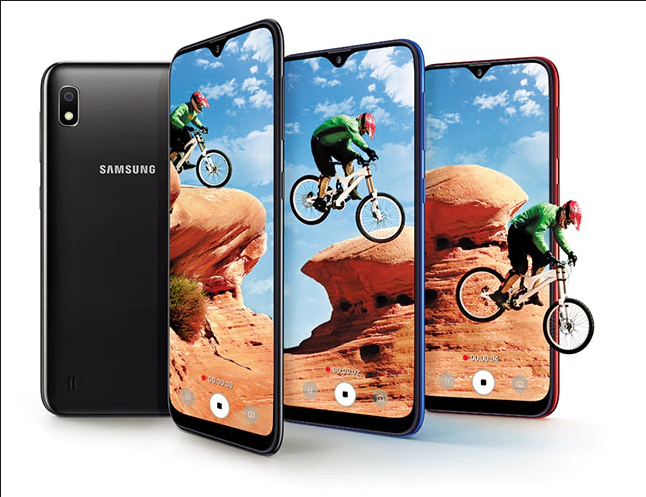
In the imaging department, the handset comes with a single 13MP camera with an f/1.9 aperture and a LED flash. Up front, there is a 5MP selfie camera with an f/2.0 aperture. The front camera supports Facial Recognition feature for unlocking the phone.
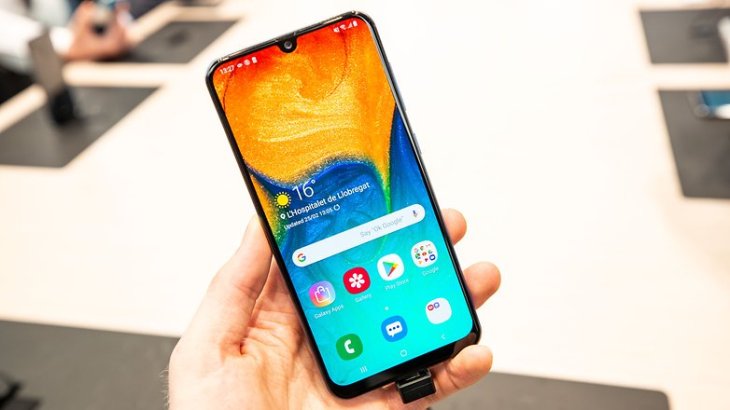
Moving to the Galaxy A30, it sports a large 6.4-inch Super AMOLED panel with Full-HD+ resolution. Under the hood, it runs on Samsung’s Exynos 7904 chipset which is the same as the Galaxy M20 and Galaxy M30. The chipset is paired with 4GB of RAM and 64GB of storage which is expandable via a dedicated microSD slot up to 512GB. Powering the phone is a large 4,000mAh cell with fast charging support. Same as the Galaxy A10, it ships with Android 9.0 Pie with One UI on top. As for security, it features a rear-mounted fingeprint sensor.
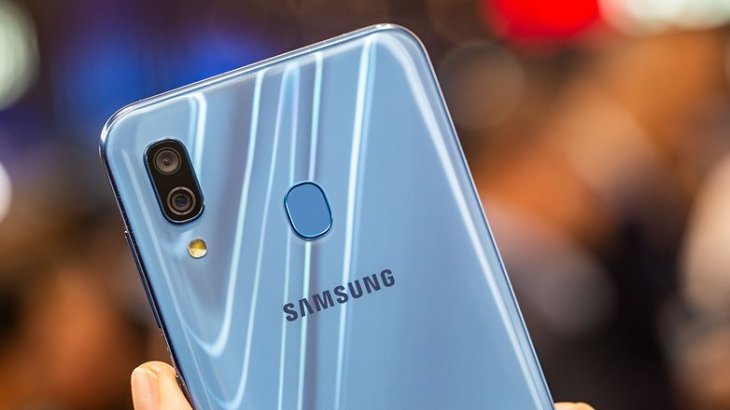
In terms of camera, the Galaxy A30 features a dual camera system on the rear, including a 16MP primary sensor with an f/1.7 aperture and a 5MP secondary ultra-wide angle camera with an f/2.2 aperture. Taking selfies and video calling is done by a 16MP fixed-focus shooter with an f/2.0 aperture.
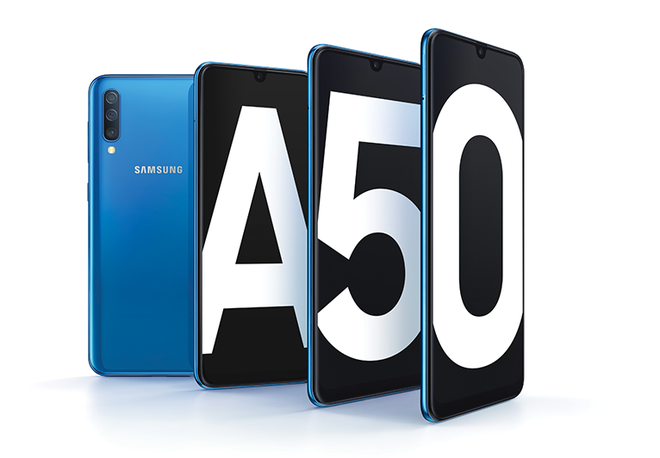
The last on the lineup, Galaxy A50, is launched in the mid-range segment. It has a similar design to the Galaxy A30 except for some changes and better hardware specs. Up front, it packs the same 6.4-inch FHD+ Super AMOLED panel with a water-drop notch on top. It is equipped with an octa-core Exynos 9610 chipset along with 4GB / 6GB of RAM and 64GB of storage which is expandable via a dedicated microSD slot up to 512GB. Similar to the A30, it is backed by a 4,000mAh cell with 15W fast charging support. Just like the other two, it also runs Samsung’s One UI based on the latest Android 9.0 Pie. The A50 has both on-screen fingerprint sensor and Face Unlock feature for unlocking the phone.
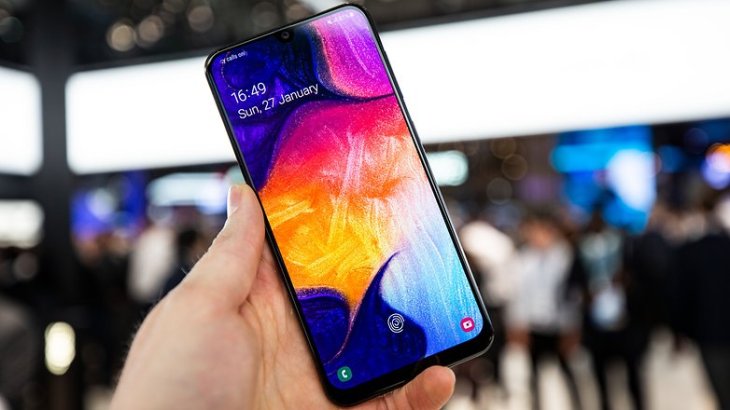
As for the camera, it sports a triple camera system on the back, comprising of a 25MP main camera with an f/1.7 aperture, an 8MP secondary sensor with an f/2.2 aperture and an ultra wide-angle lens. The third one is a 5MP sensor for depth sensing. Up front, there is a 25MP selfie camera with an f/2.0 aperture.
Featured Stories

Mobile - Oct 23, 2025
How Casual Games Are Winning the Mobile Attention War

Mobile - Jul 03, 2025
OPPO Reno 14 Series Hits India: Launch Date, Cameras, and Specs

Mobile - Jun 12, 2025
Best Gaming Phones 2025: Top Devices for Mobile Gaming

Mobile - Jun 12, 2025
Vivo T4 Ultra Debuts with MediaTek Dimensity 9300+ Chipset

Mobile - Jun 08, 2025
Realme GT 7T Review: Power Meets Endurance in Controversial Style

Mobile - Jun 08, 2025
Motorola Edge 60 Set to Debut in India This June

Mobile - Jun 07, 2025
Realme C73 5G Launches in India: Budget 5G Phone Starts at ₹10,499

Gadgets - Jun 07, 2025
OnePlus 13s Makes Indian Debut: Compact Flagship Brings Premium Features at...

Mobile - Jun 04, 2025
Samsung Galaxy Z Fold 7 Ultra: The Next Chapter of Premium Foldables

Mobile - Jun 02, 2025
Comments
Sort by Newest | Popular